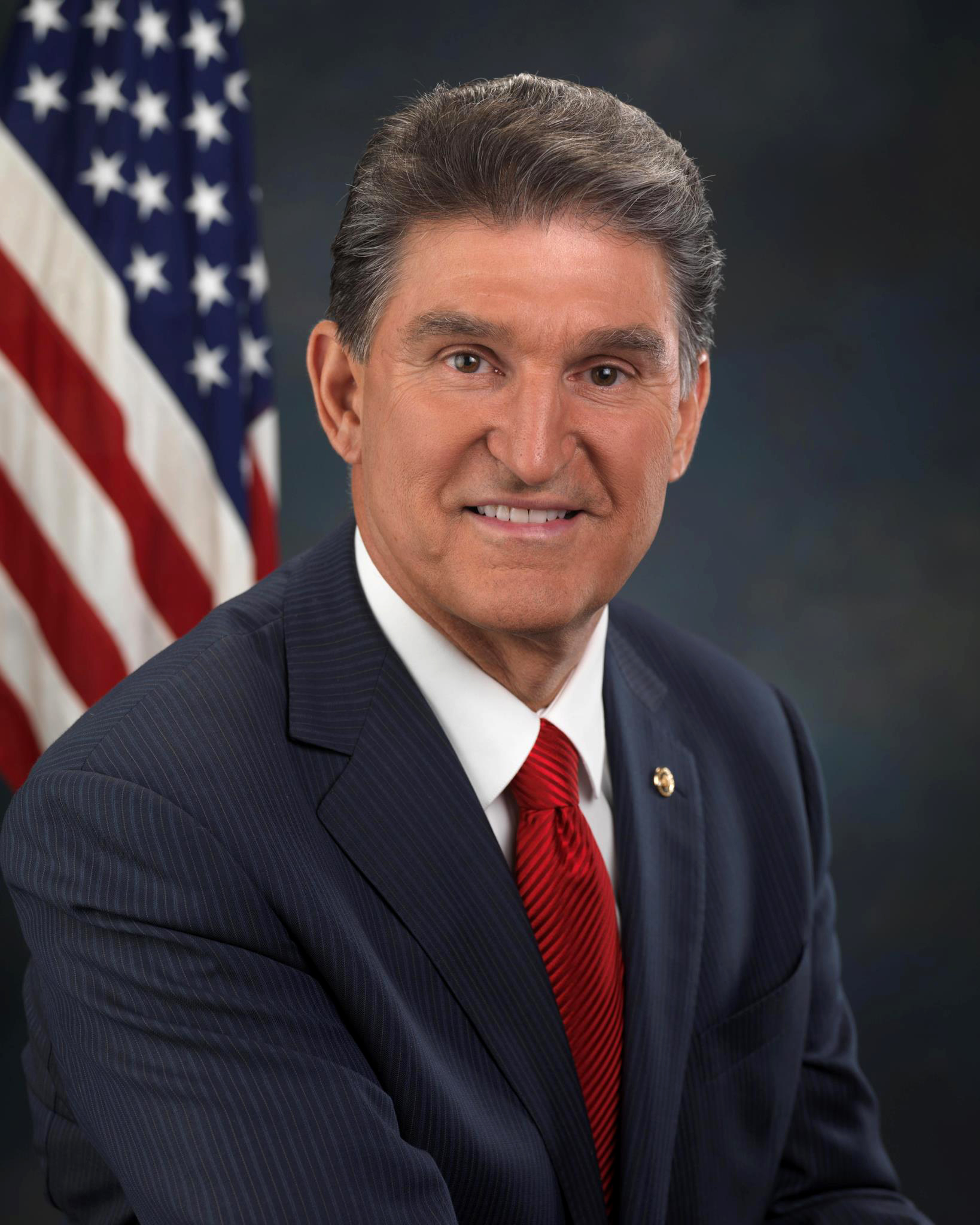You can read the letter in PDF form here and in talking point form here.
Dear Chairman Manchin,
The "Build Back Better" legislation you are considering will be an unmitigated disaster for the West Virginia energy industry and economy. No handful of compromises will change this. Any vote other than no will do irreparable damage to your state.
As an energy expert and concerned citizen, I am writing you because I believe you are our greatest hope of stopping the worst energy legislation in US history, which will especially harm your state of West Virginia: the “Build Back Better” reconciliation bill.
According to press reports and insiders, you are in active negotiations to change or remove several provisions of Build Back Better that you are concerned will be particularly harmful to West Virginia. But no compromise is possible, because Build Back Better is through-and-through destructive to your state.
Build Back Better will be an unmitigated disaster to West Virginia energy in 3 ways:
- It will make West Virginia electricity much higher cost and much less reliable.
- It will sabotage West Virginia's growing oil production.
- It will sabotage West Virginia's growing natural gas production.
The only way to protect West Virginia is to stop it.
1: Build Back Better will make West Virginia electricity much higher cost and much less reliable
Through many policies designed to move us from 12% solar/wind electricity to 50% in 8 years—above all a 10-year extension/expansion of solar/wind subsidies—Build Back Better will end low-cost, reliable electricity in West Virginia.1
Low-cost, reliable electricity is one of West Virginia's great assets. Thanks to its overwhelmingly coal-fired electricity, West Virginia has some of the lowest electricity rates in the country—second only to coal-heavy Kentucky on the East Coast.2
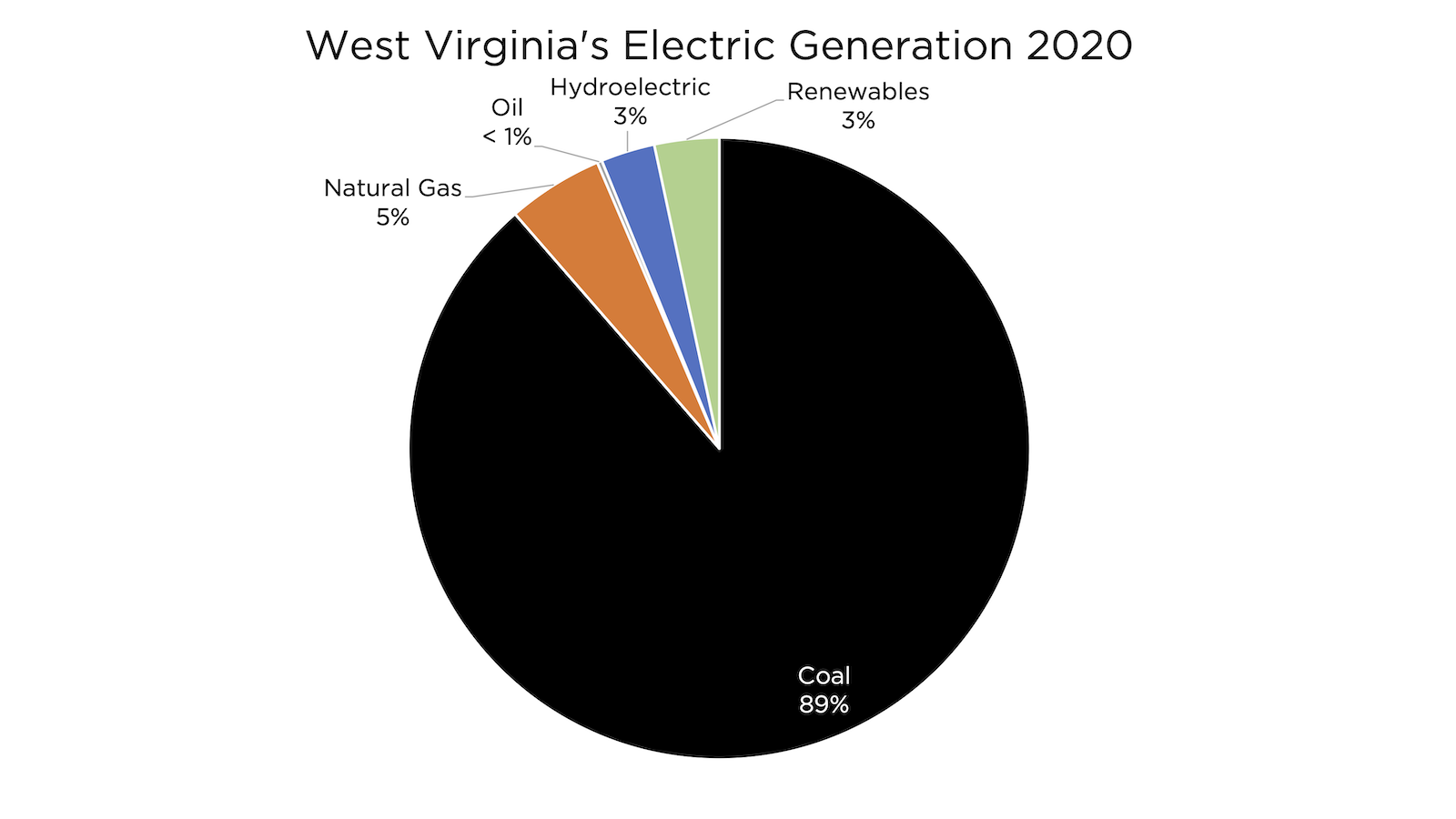
Low-cost, reliable electricity saves everyone money and makes West Virginia a hub of industry. The industrial sector uses over 40% of West Virginia’s electricity. Low-cost, reliable electricity also makes West Virginia a major exporter of electricity to its regional grid, meaning more money from other states.3
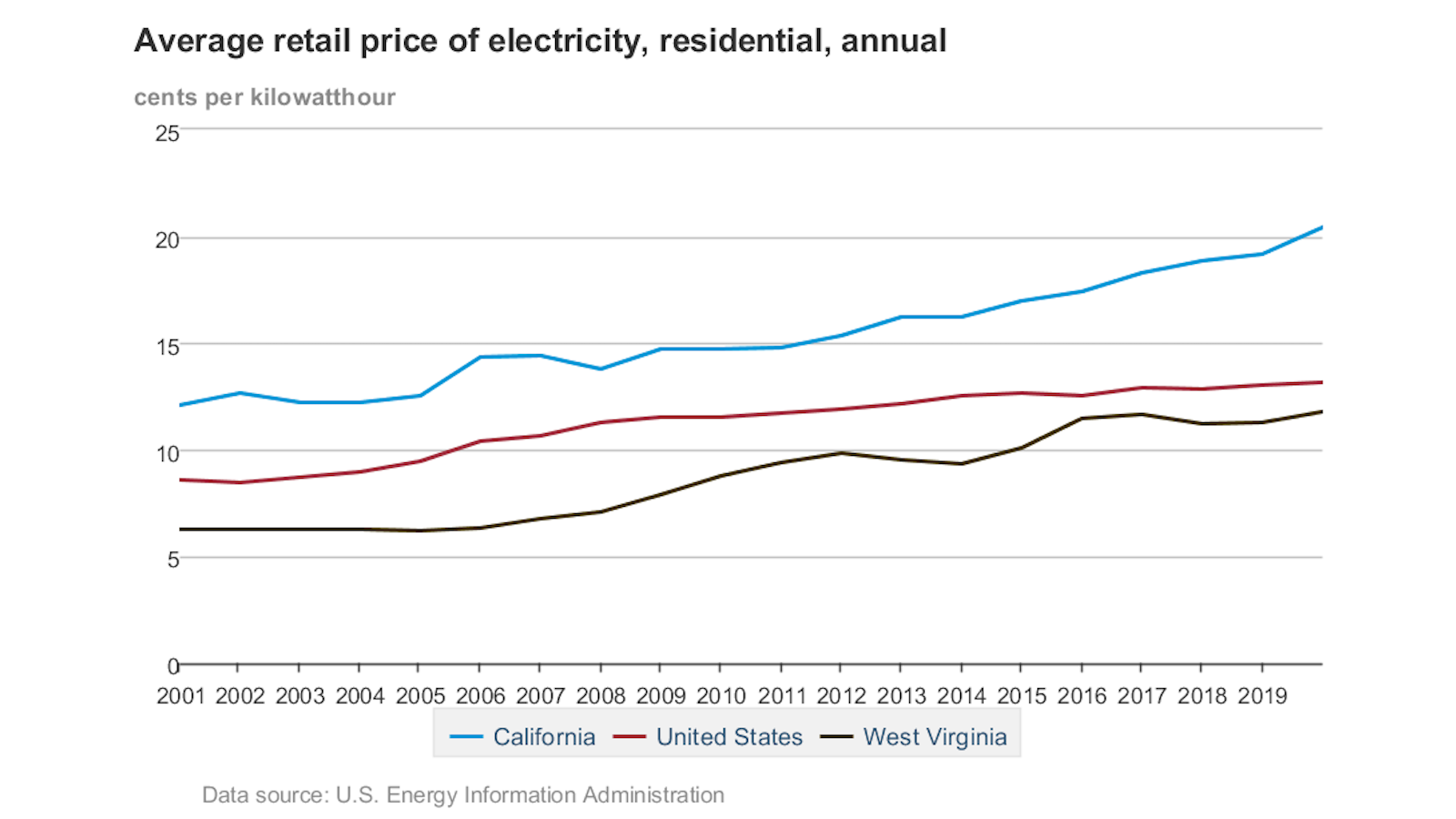
If West Virginia is going to continue to have low-cost, reliable electricity, it must continue its policy of choosing the lowest-cost, most reliable sources at any given time--and not engaging in the costly process of prematurely shutting down power plants. Build Back Better would make this impossible.4
The overarching energy goal of Build Back Better, which shapes dozens of individual policies, is the rapid elimination of fossil fuels in favor of solar/wind energy. Specifically, as I document here, it seeks going from 12% to 50% unreliable solar/wind in 8 years!5
Build Back Better tries to quadruple our use of unreliable solar/wind in 8 years through a 10-year extension/expansion of the “ITC/PTC” subsidies, as well as many other provisions to pressure and bribe utilities into eliminating reliable fossil fuel power plants.6
Every area of the world that has tried using significant amounts of unreliable solar and wind has had major cost and/or reliability problems. In the US, we have had big electricity price increases and huge reliability problems even at 12% solar and wind.7

Germans, to get 37% of their electricity from solar+wind, have doubled their prices--now 3X US prices. And they can only get away with 37% because they have neighbors to bail them out when solar/wind fall short. The US as a whole has no such neighbors.8
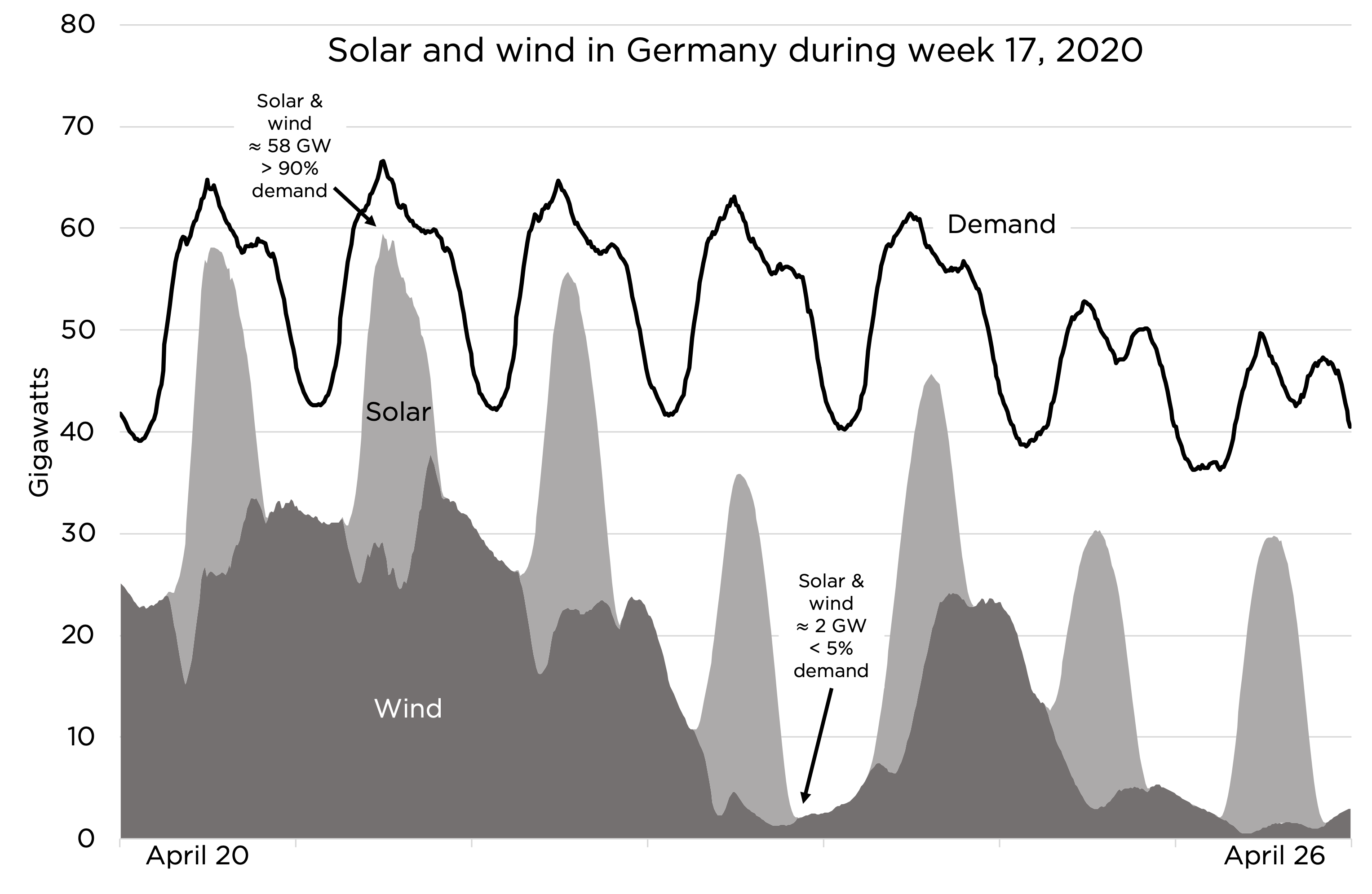
In California, where I live, we get <20% of our electricity from domestic solar and wind--and we have skyrocketing prices along with disastrous shortages and blackouts. And it would be far worse if we didn't import 30% of our electricity from neighbors.9

During Texas's February cold spell, solar and wind disappeared when they were needed the most. Texas’s expensive batteries, which couldn't even store minutes worth of electricity, didn’t help, either. What would they have done under the 50% solar and wind??!!10
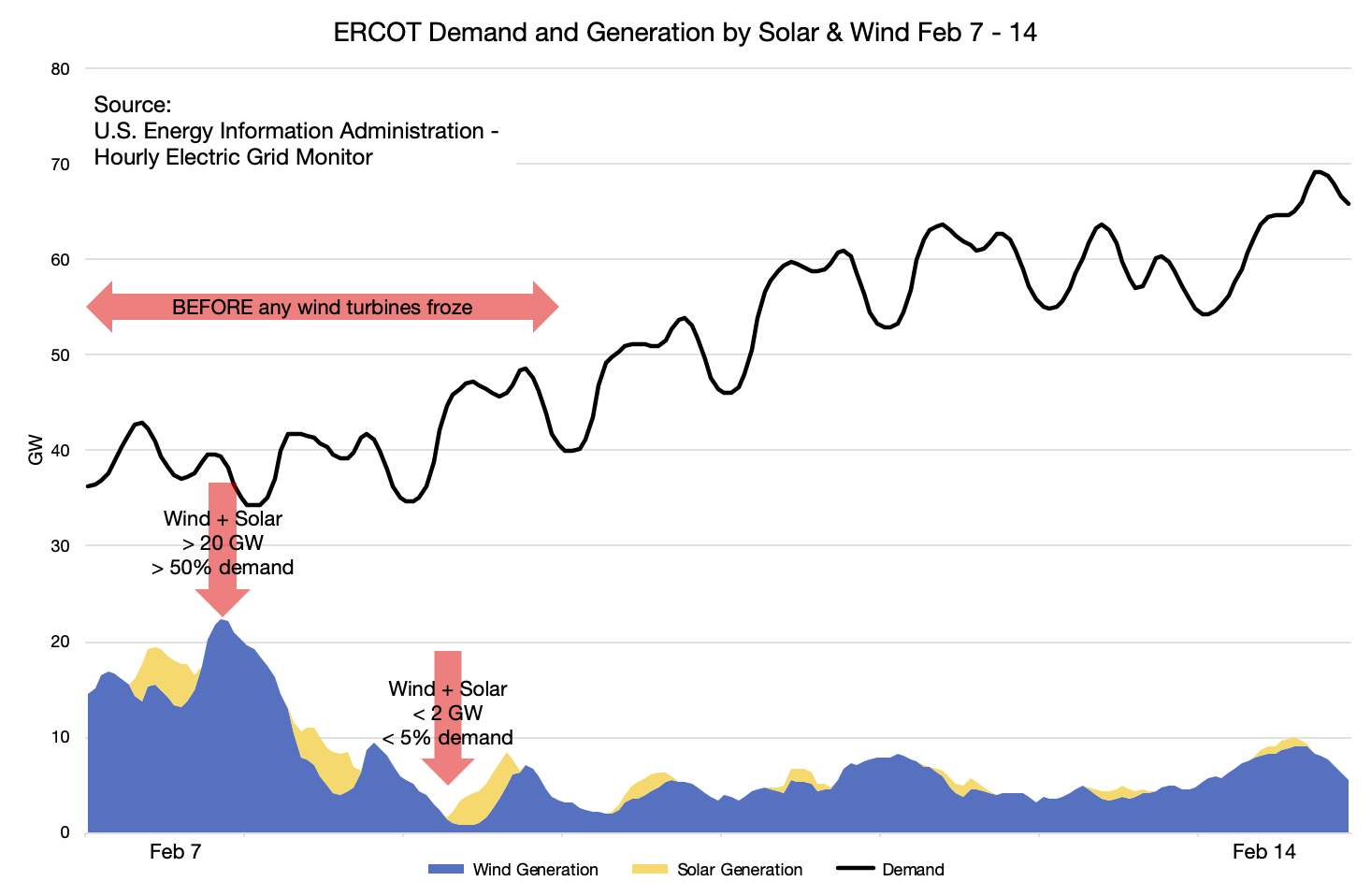
If Build Back Better passes, West Virginia will suffer the same fate that Germany, California, Texas, and many others have: prematurely shutting down many reliable power plants at great cost, paying for massive new unreliable solar/wind infrastructure at great cost, and facing huge reliability risks.
While every state will be harmed by Build Back Better’s imposition of high-cost, unreliable electricity, West Virginia will suffer especially—whether from fleeing industry or from deadly winters when the power goes out and over 50% of the population is relying on electric heat.11
2: Build Back Better will sabotage West Virginia's growing oil production
A major new cause of prosperity in West Virginia has been its booming oil industry, which has grown 10X over the last decade.
But that growth is threatened by dozens of anti-oil provisions in Build Back Better—way more than can be removed in negotiation.12
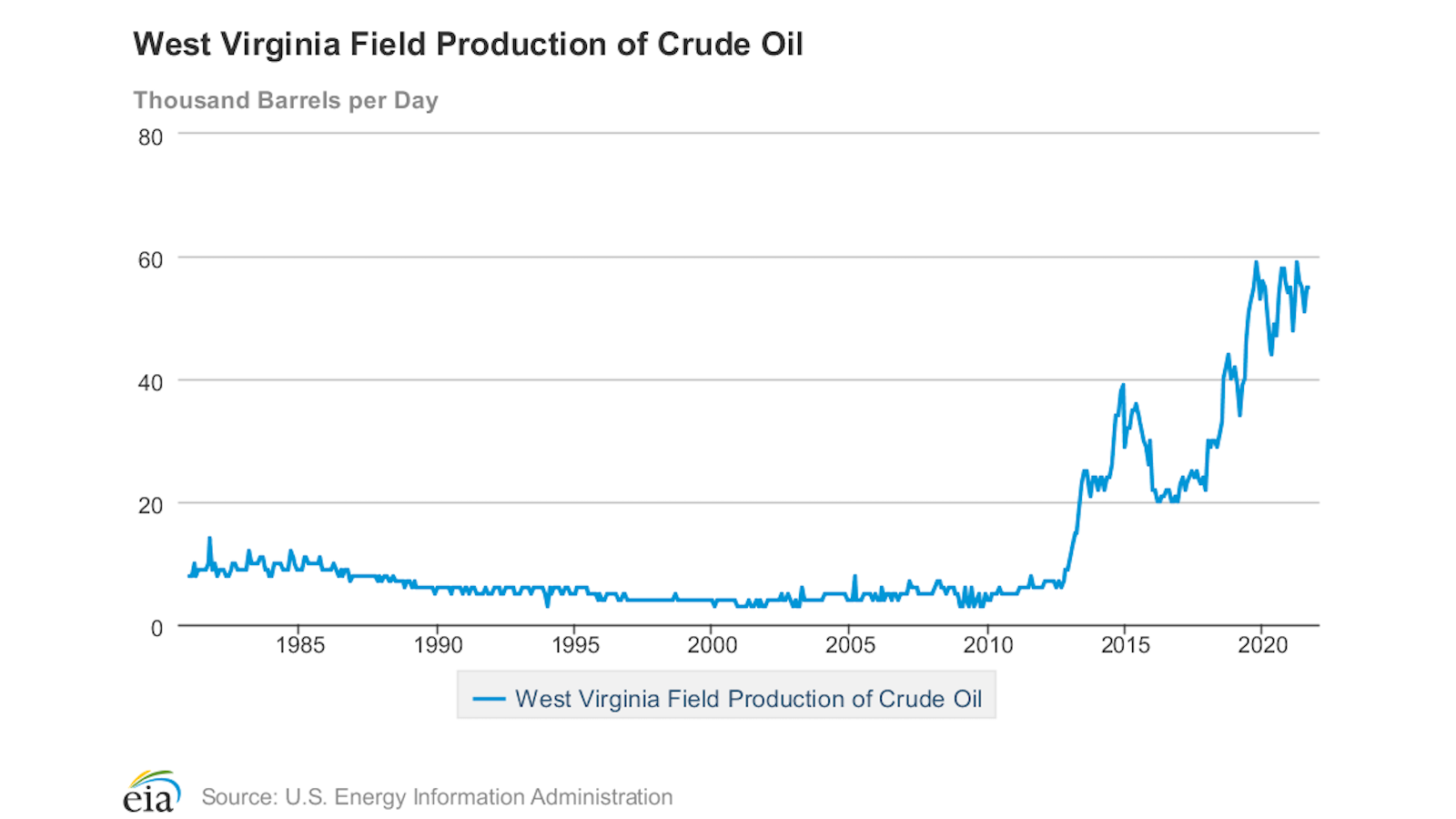
3: Build Back Better will sabotage West Virginia's growing natural gas production
West Virginia is home to about 10% of the US’s gas reserves. Increasing natural gas production has benefited West Virginia greatly, especially the industrial sector. The Build Back Better’s dozens of anti-gas provisions will end this boom.13
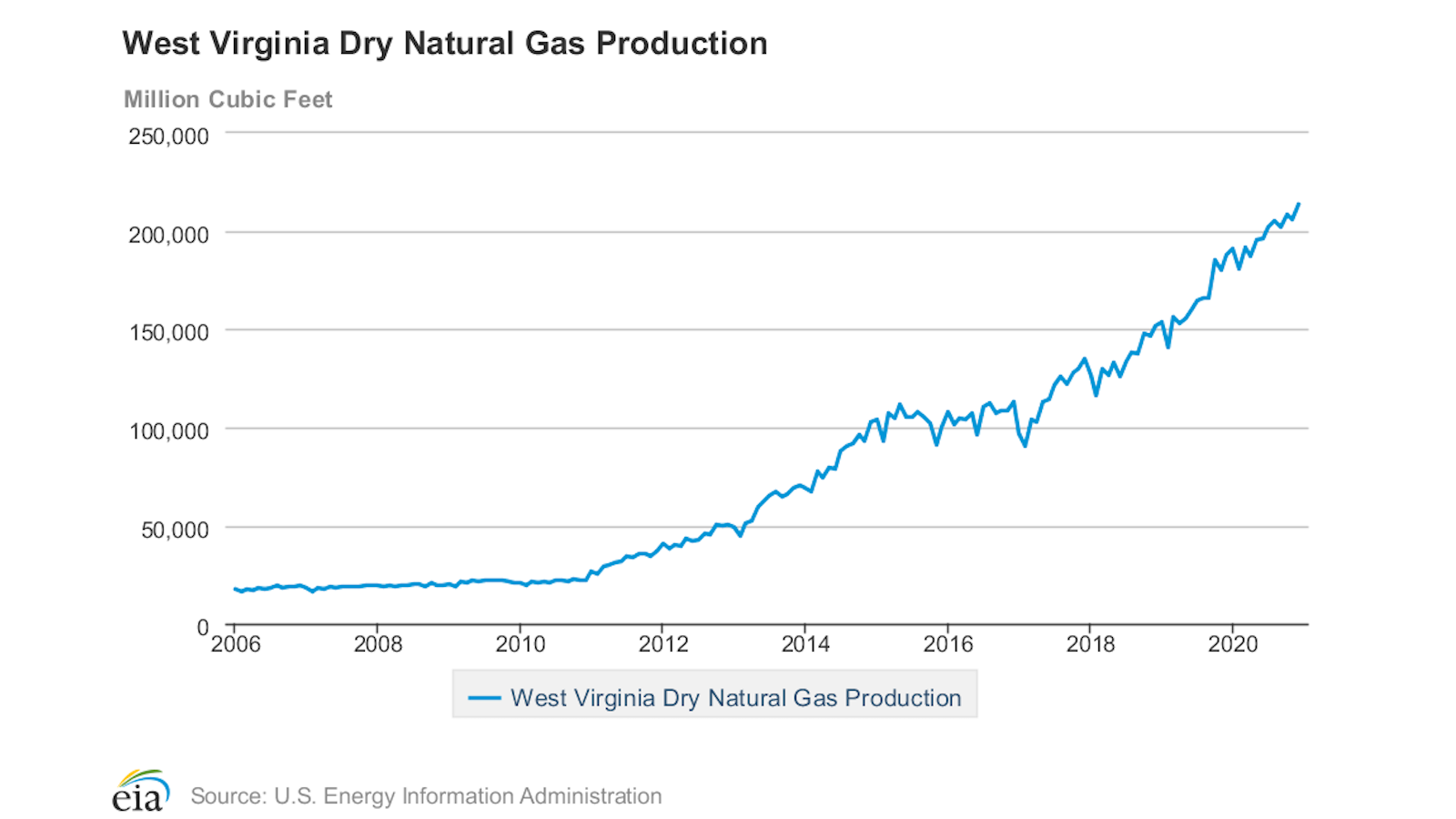
Since you are in a position to stop Build Back Better, its architects will likely offer you a few compromises and various welfare payments for “communities left behind” in West Virginia. But no amount of welfare can make up for the destruction of West Virginia’s energy industry—and with it, West Virginia’s economy.
The #1 target of Build Back Better is America's use of coal. That means its #1 target is West Virginia. A 2019 study by West Virginia University economists found that coal mining and coal-fired power plants generated economic activity of almost $14 billion, employment for over 30,000 West Virginians, and >10% of West Virginia taxes.14
Do not believe claims that magic "green jobs" will make West Virginia better after Build Back Better destroys the coal industry. "Green jobs" are: 1) unproductive, 2) largely in China, and 3) the cause of job losses in other industries via high energy prices.15
Build Back Better’s push for rapidly eliminating US fossil fuels plays perfectly into the hands of China. China has a clear strategy of running its economy on over 80% fossil fuels, while encouraging us to run on unreliable solar and wind—that is made using Chinese fossil fuels.16
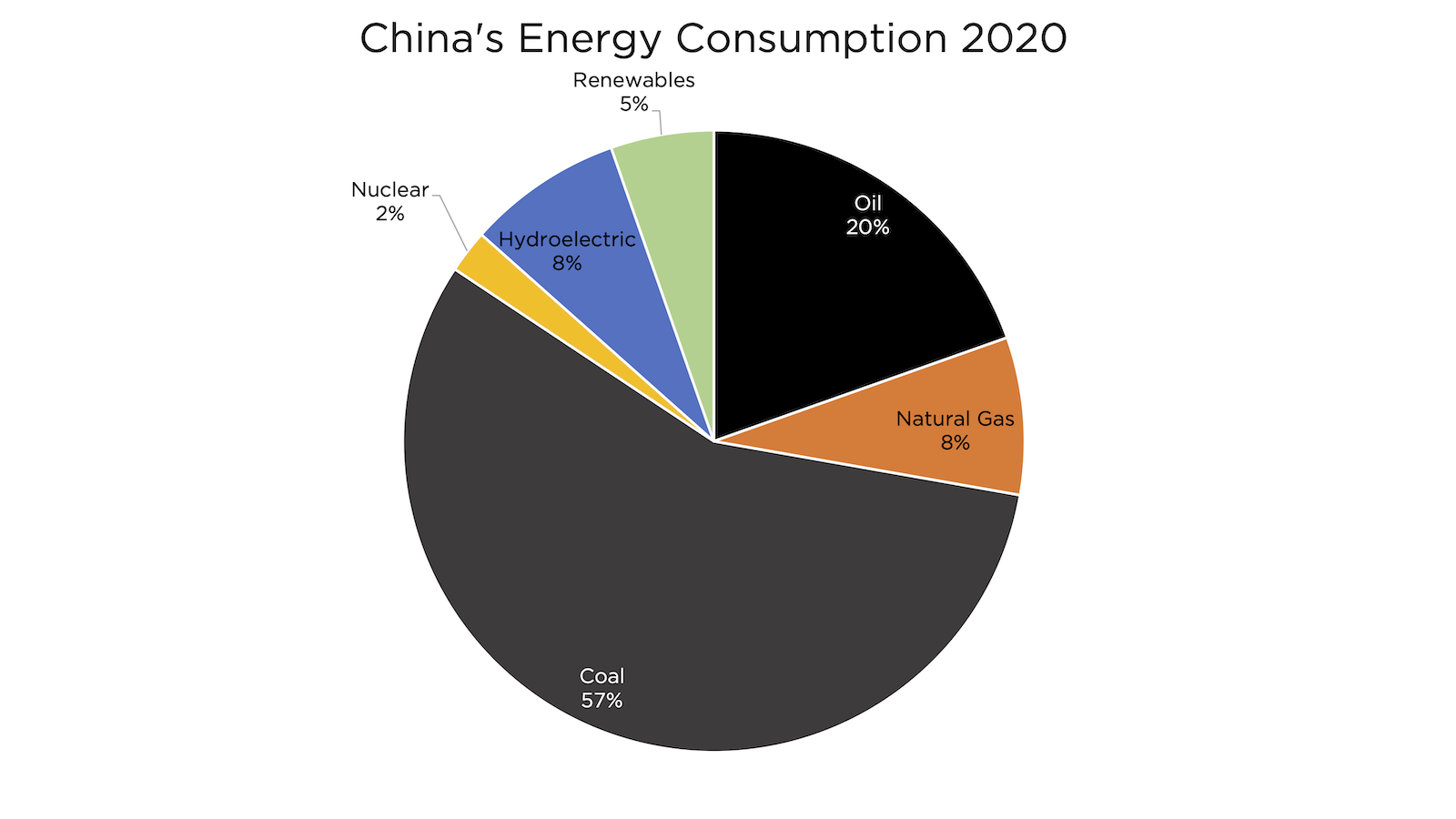
The claim that Build Back Better's anti-America, anti-West Virginia energy policies will lower global CO2 emissions is absurd. As China shows, the developing world will continue to use more and more fossil fuel so long as that is the lowest-cost way for it to get reliable energy.
https://energytalkingpoints.com/co2-emissions/
There is no need to take America-destroying and West Virginia-destroying measures to rapidly eliminate CO2 emissions. Fossil fuels' CO2 emissions have contributed to the warming of the last 170 years, but that warming has been mild and manageable—1° C, mostly in colder parts of the world.17
Fossil fuels have actually made us far safer from climate by providing low-cost energy for the amazing machines that protect us against storms, protect us against extreme temperatures, and alleviate drought. Climate disaster deaths have decreased 98% over the last century.18
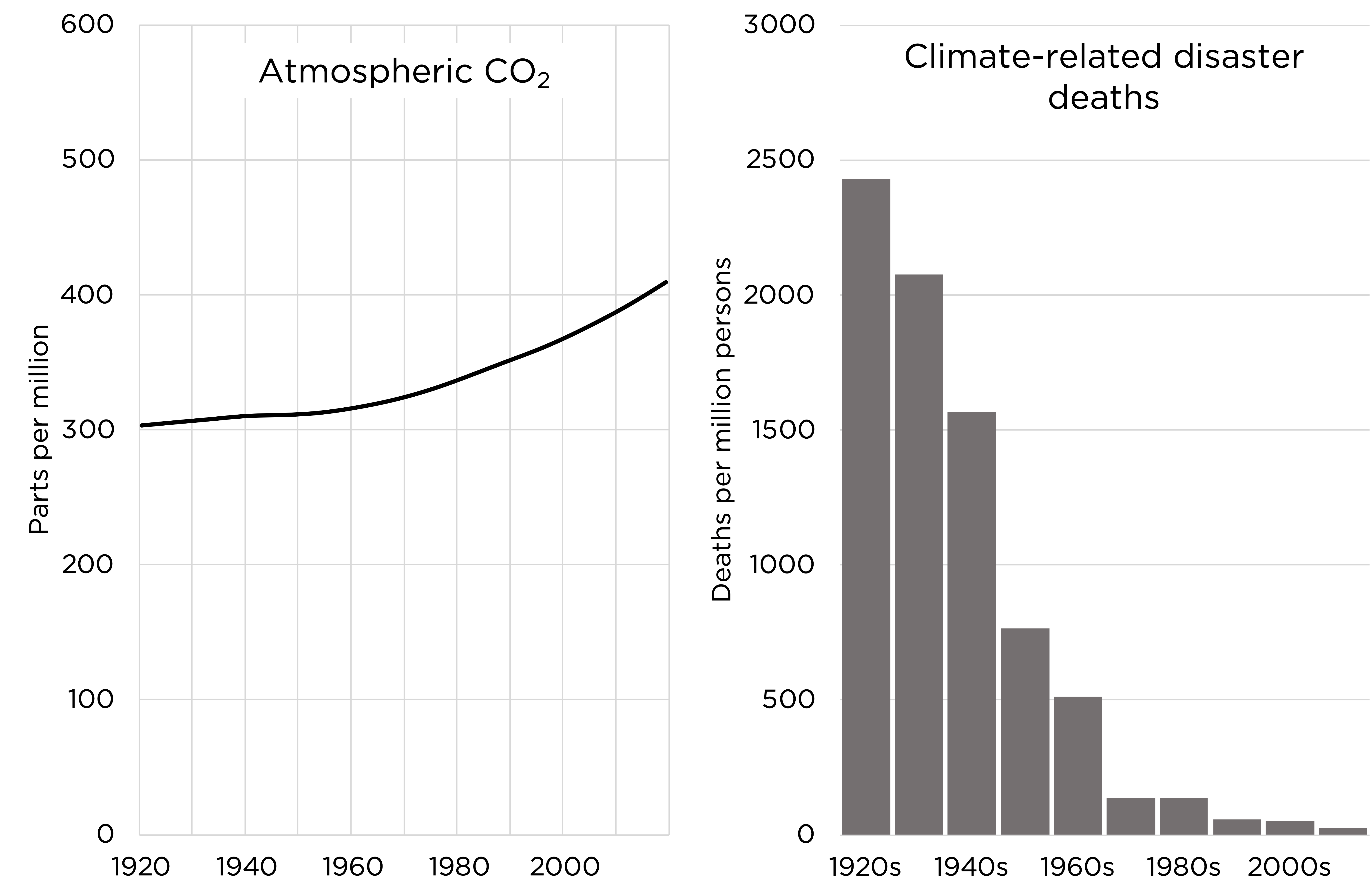
Please, Senator Manchin, for the sake of this country and for your state, stop “Build Back Better”—then work with both parties on new legislation that liberates, not strangles, American energy, including promising low-carbon alternatives like nuclear.
Sincerely,

Alex Epstein
Founder and President, Center for Industrial Progress
Author, The Moral Case for Fossil Fuels and Fossil Future
References
-
Because hydro and nuclear power capacity will be difficult to increase and the heavy favoritism for solar and wind in the legislation proposal, an 80% goal of “clean” energy sources would require solar and wind to be increased to about 50% of total electricity generation in a few years.
Alex Epstein - Talking Points on the reconciliation bill, part 1: "80% clean electricity by 2030"↩ -
In 2020 coal generated 89% of West Virginia’s electricity.
U.S. Energy Information Administration - Electric Power Annual“In 2020, West Virginia had the second-lowest average price for electricity, after Kentucky, among states east of the Mississippi River”
U.S. Energy Information Administration - West Virginia State Energy Profile, Analysis↩ -
U.S. Energy Information Administration - ELECTRICITY DATA BROWSER
“The industrial sector accounts for the largest share of end-use energy consumption in West Virginia, at 45% of the state's total.”
U.S. Energy Information Administration - West Virginia State Energy Profile, Analysis↩ -
“Although coal-fired power plants with almost 2,800 megawatts of capacity retired during the past decade and another nearly 1,300 megawatts are scheduled for retirement in 2022, West Virginia still has more than 12,500 megawatts of coal-fired capacity.”
U.S. Energy Information Administration - West Virginia State Energy Profile, Analysis↩ -
Alex Epstein - Talking Points on the reconciliation bill, part 1: "80% clean electricity by 2030"↩
-
Alex Epstein - Talking Points on the reconciliation bill, part 2: the 10-year extension of solar and wind subsidies↩
-
U.S. Energy Information Administration - ELECTRICITY DATA BROWSER
BDEW Strompreisanalyse Nov 2021 p. 7
Alex Epstein - Talking Points on California Blackouts
Alex Epstein - Talking Points on the Texas Electricity Crisis↩
-
German household electricity prices have more than doubled to over 0.3€ per kWh ($0.35 per kWh depending on currency exchange rate) since 2000 when the modern renewable energy law started to massively incentivize solar and wind capacity on the German grid.
BDEW Strompreisanalyse Nov 2021 p. 7The average US household price in 2020 was $0.1315 per kWh. In California it was $0.2045 per kWh.
U.S. Energy Information Administration Electric Power Annual table 5aIncreasingly, Germany depends on interconnections with neighboring countries. In 2020 the country experienced a sharp increase in electricity imports, while still massively exporting solar and wind overproduction.
Reuters - German power export surplus shrank 46.2% in 2020German grid data by Bundesnetzagentur SMARD↩
-
In 2020 California solar and wind generated only 15.8% of the total electricity in the state power grid system. Net imports accounted for 30% of the total. The net imports only represent a fraction of the total transmission requirements necessary to keep the Californian power grid stable between excessive solar/wind generation and shortfalls due to lack of wind and sunlight.
California Energy Commission - 2020 Total System Electric Generation↩ -
U.S. Energy Information Administration - HOURLY ELECTRIC GRID MONITOR, Texas ERCOT grid area, February 2021↩
-
“More than half of the households in West Virginia use electricity as their primary source for home heating, and the state's residential sector accounts for one-third of electricity retail sales.”
U.S. Energy Information Administration - West Virginia State Energy Profile, Analysis↩ -
West Virginia’s crude oil production has taken off since 2012.
U.S. Energy Information Administration - West Virginia Field Production of Crude OilThe Build Back Better Plan has the explicit goal of rapidly eliminating America’s greenhouse gas emissions. Among other measures, higher royalties for drilling on federal lands, methane fees, reclamation bonding requirements, inspection fees, severance fees will punish the oil & gas industry while billions in subsidies and regulatory favors will be granted to unreliable, non-scalable technologies.
U.S. House of Representatives Rules Committee Build Back Better Act Section by Section print↩ -
“West Virginia had 34 trillion cubic feet of shale gas reserves as of the end of 2019, which was 10% of the nation's total.”
U.S. Energy Information Administration - West Virginia State Energy Profile, AnalysisNatural gas production has been booming in West Virginia since 2010, about 10-folding the in-state production over the last 11 years.
U.S. Energy Information Administration - West Virginia Dry Natural Gas ProductionWhile natural gas is the primary cause for CO2 emissions reduction in the power sector by replacing coal, the plans of the administration for a zero emissions power sector and economy-wide zero emissions later on will require elimination of natural gas use and production. In particular, higher royalties for drilling on federal lands, methane fees and monitoring requirements, severance and other regulations and financial burdens will make it even more expensive to produce natural gas in West Virginia while billions in subsidies and regulatory favors for unreliable solar and wind will guarantee that West Virginia’s coal-fired electricity will not be replaced with natural gas.
U.S. House of Representatives Rules Committee Build Back Better Act Section by Section print↩ -
Christiadi; Bowen, Eric; and Deskins, John, "The Economic Impact of Coal and Coal-Fired Power Generation in West Virginia" (2021). Bureau of Business & Economic Research. 327.↩
-
Alex Epstein - Talking Points on how the reconciliation bill will create mass "green joblessness"↩
-
The decadally smoothed data from the UK Met Office HadCRUT4 dataset (column 1 contains the year, column 2 the decadally smoothed temperature anomaly data in °C) shows an increase of 0.974°C between 1850 and 2019.↩
-
For every million people on earth, annual deaths from climate-related causes (extreme temperature, drought, flood, storms, wildfires) declined 98%--from an average of 247 per year during the 1920s to 2.5 in per year during the 2010s.
Data on disaster deaths come from EM-DAT, CRED / UCLouvain, Brussels, Belgium – www.emdat.be (D. Guha-Sapir).\
Population estimates for the 1920s from the Maddison Database 2010 come from the Groningen Growth and Development Centre, Faculty of Economics and Business at University of Groningen. For years not shown population is assumed to have grown at a steady rate.
Population estimates for the 2010s come from World Bank Data.↩
